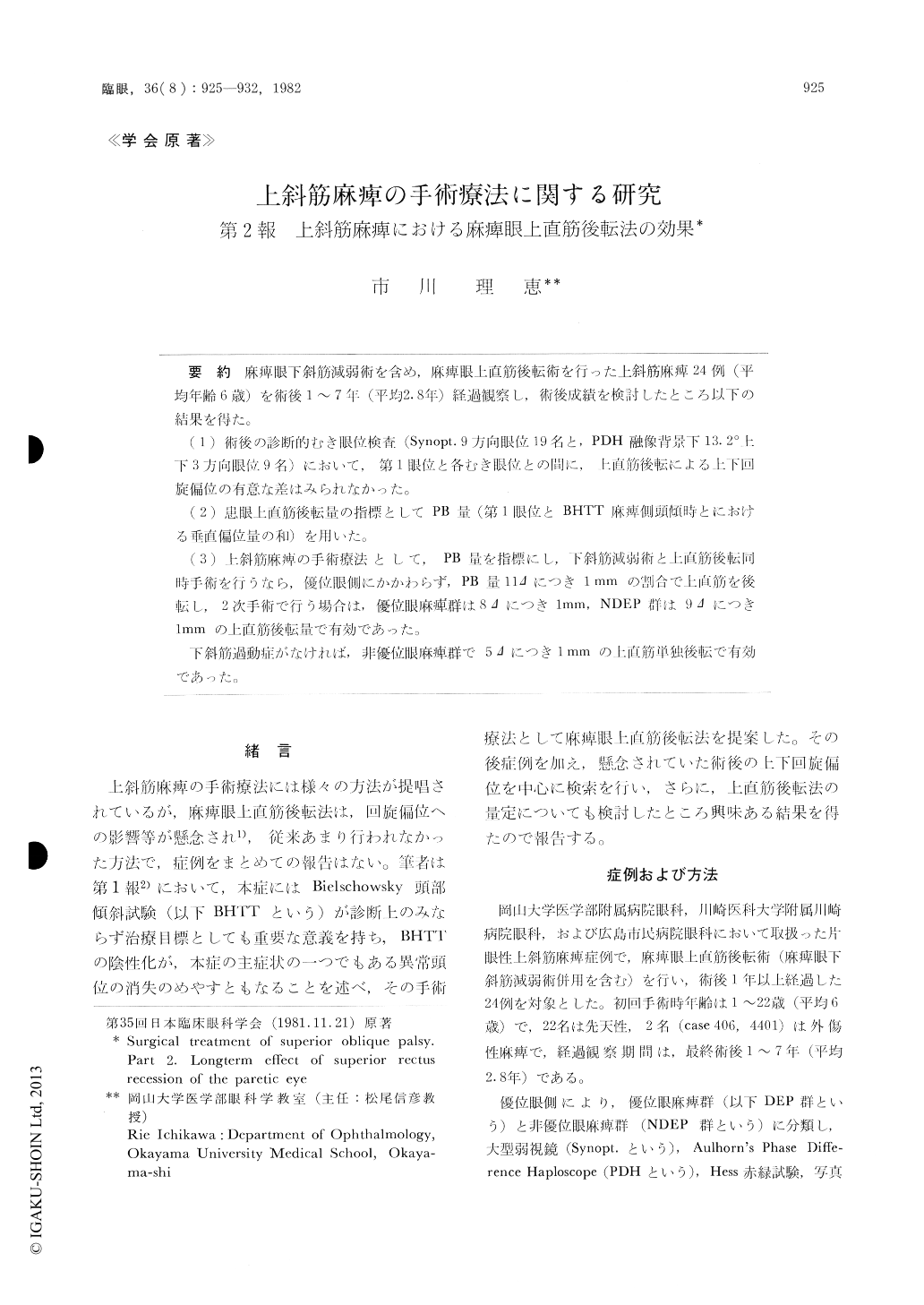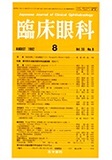Japanese
English
- 有料閲覧
- Abstract 文献概要
- 1ページ目 Look Inside
麻痺眼下斜筋減弱術を含め,麻痺眼上直筋後転術を行った上斜筋麻痺24例(平均年齢6歳)を術後1〜7年(平均2.8年)経過観察し,術後成績を検討したところ以下の結果を得た。
(1)術後の診断的むき眼位検査(Synopt.9方向眼位19名と,PDH融像背景下13.2°上下3方向眼位9名)において,第1眼位と各むき眼位との間に,上直筋後転による上下回旋偏位の有意な差はみられなかった。
(2)患眼上直筋後転量の指標としてPB量(第1眼位とBHTT麻痺側頭傾時とにおける垂直偏位量の和)を用いた。
(3)上斜筋麻痺の手術療法として,PB量を指標にし,下斜筋減弱術と上直筋後転同時手術を行うなら,優位眼側にかかわらず,PB量11Δにつき1mmの割合で上直筋を後転し,2次手術で行う場合は,優位眼麻痺群は8Δにつき1mm,NDEP群は9Δにつき1mmの上直筋後転量で有効であった。
下斜筋過動症がなければ,非優位眼麻痺群で5Δにつき1mmの上直筋単独後転で有効であった。
Postsurgical evaluation of 24 cases with superior oblique palsy treated by recession of superior rectus (SR) of the affected eye after an average of 2.8 years. Weakening operation of the infeior oblique (IO) of the affected eye had additionally been per-formed in 10 cases. The ages of the subjects aver-aged 6 years at the time of surgery.
No significant changes due to recession of SR were detected in the amount of cyclovertical devia-tions when examined by synoptophore in the di-agnostic positions of gaze (19 cases) and/or by phase difference haploscope in 13.2° upward, pri-mary and 13.2° downward positions of gaze (9 cases).

Copyright © 1982, Igaku-Shoin Ltd. All rights reserved.


